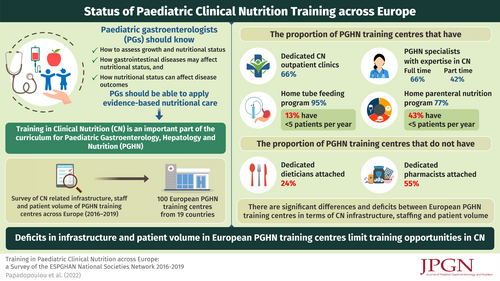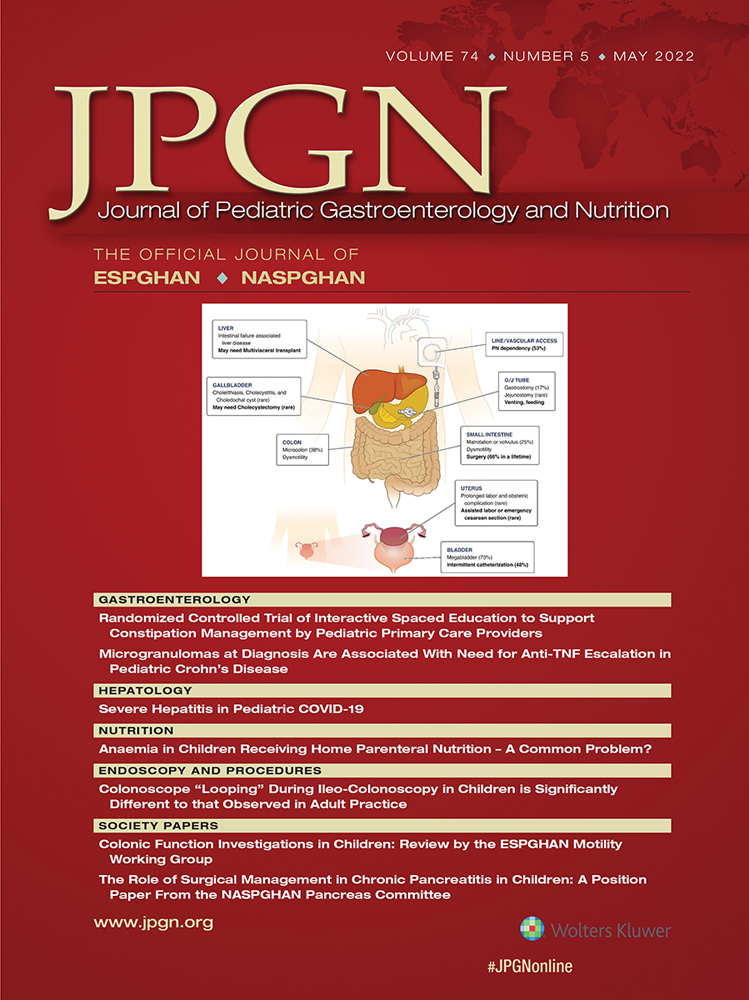Training in Paediatric Clinical Nutrition Across Europe
A Survey of the National Societies Network (2016–2019) of the European Society for Paediatric Gastroenterology, Hepatology and Nutrition
Dr Gabor Veres passed away before the writing of the manuscript.
Disclaimer: This article was developed by the ESPGHAN National Societies Network. It does not necessarily represent ESPGHAN policy and is not formally endorsed by the ESPGHAN council.
This project was supported by the European Society for Paediatric Gastroenterology, Hepatology and Nutrition.
B.K. is the Else Kröner Senior Professor of Paediatrics at LMU—University of Munich, financially supported by Else Kröner- Fresenius-Foundation, LMU Medical Faculty, and LMU University Hospitals.
The authors report no conflicts of interest.
Supplemental digital content is available for this article. Direct URL citations appear in the printed text, and links to the digital files are provided in the HTML text of this article on the journal's Web site (www.jpgn.org).
An infographic is available for this article at: http://links.lww.com/MPG/C653.
ABSTRACT
Objectives/Background:
Disease-related malnutrition is common in patients with chronic diseases and has detrimental effects, therefore, skills in nutrition care are essential core competencies for paediatric digestive medicine. The aim of this survey, conducted as part of a global survey of paediatric gastroenterology, hepatology and nutrition (PGHN) training in Europe, was to assess nutrition care-related infrastructure, staff, and patient volumes in European PGHN training centres.
Methods:
Standardized questionnaires related to clinical nutrition (CN) care were completed by representatives of European PGHN training centres between June 2016 and December 2019.
Results:
One hundred training centres from 17 European countries, Turkey, and Israel participated in the survey. Dedicated CN clinics exist in 66% of the centres, with fulltime and part-time CN specialists in 66% and 42%, respectively. Home tube feeding (HTF) andhome parenteral nutrition (HPN) programmes are in place in 95% and 77% of centres, respectively. Twenty-four percent of centres do not have a dedicated dietitian and 55% do not have a dedicated pharmacist attached to the training centre. Even the largest centres with >5000 outpatients reported that 25% and 50%, respectively do not have a dedicated dietitian or pharmacist. Low patient numbers on HTF and HPN of <5 annually are reported by 13% and 43% of centres, respectively.
Conclusions:
The survey shows clear differences and deficits in Clinical Nutrition training infrastructure, including staff and patient volumes, in European PGHN training centres, leading to large differences and limitations in training opportunities in Clinical Nutrition.





